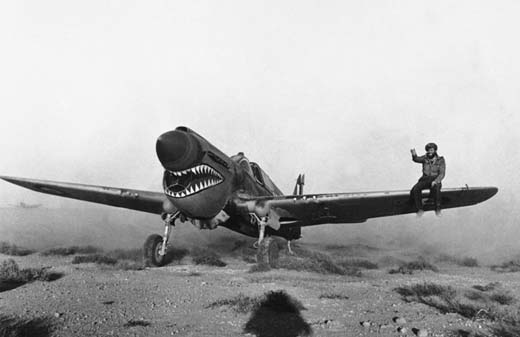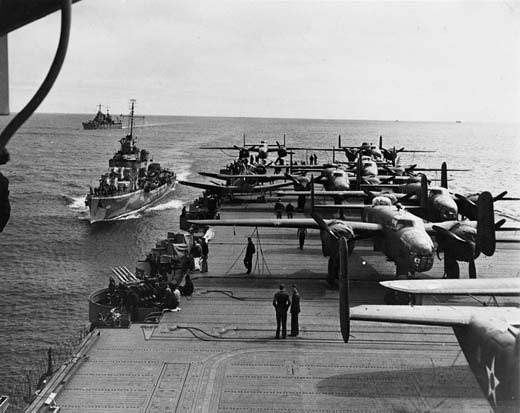Air Operations, CBI
During the night of the 2nd, 2 7th Heavy Bomb Group's B-17s and an LB-30 undertake the 10th Air Force's first combat mission attacking Japanese shipping in the Andaman Islands. Hits are claimed on a transport and a cruiser.
[Air Operations, Europe
There is a night raid on Weymouth. 2 hospitals are hit causing heavy casualties.
BOMBER COMMAND- The Ford motor factory near Paris is bombed again by 40 Wellingtons and 10 Stirlings. 1 Wellington is lost.
- 49 planes bomb the Le Havre harbor area with no losses. 23 Hampdens and 7 Wellingtons lay mines in Quiberon Bay. 1 Hampden and 1 Wellington are lost.
Landing in a Sandstorm |
 |
Air Operations, Pacific
US 10th Air Force B-17 Flying Fortress bombers fly their first missions in the CBI theater, bombing fleet units in the Andaman Islands.
[ The US Carrier Hornet Leaving San Francisco |
 |
Allied Planning
Churchill receives a letter from Roosevelt to say that Harry Lloyd Hopkins, Roosevelt's specialist in foreign affairs, and Gen George Marshall, Chief of Staff ot the Army, will soon be arriving in London.
Roosevelt writes, 'They will submit to you a plan which I hope will be received with enthusiasm by Russia.' The plan is for a second front in Europe - in France, the most sensitive point for the Germans. The plan has been drawn up by Lt-Col Dwight David Eisenhower, and is in answer to the insistent demands of the Russians, who want a second European front to relieve German pressure on Moscow.
[Battle of the Atlantic
The unarmed US freighter David H. Atwater (2800t) is shelled by U-552 east of Chincoteague Inlet, Virginia. There are only 3 survivors of the 25-man crew rescued by the Coast Guard Cutter Leare (WPC-344).
[Burma
(1st?)The British Burma Corps retreats from Prome to avoid being surrounded.
[ Japanese-Americans Lose the Use of their Automobiles |
 |